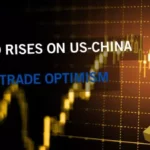Table of Contents
ToggleIntroduction

Becoming one of the most successful traders in the world requires more than just market knowledge—it demands discipline, adaptability, and mental strength. Successful traders like Paul Tudor Jones, Richard Dennis, and George Soros exemplify the mindset and strategy needed to thrive in volatile markets. This article outlines 21 essential lessons that have helped many become successful traders and can guide you on your own path to trading success.
There Is No Single Right Path to Success
Adapt Your Strategy to What Fits You
♥
- Successful traders don’t all follow the same blueprint — and that’s one of the most important lessons any aspiring trader can learn. There is no single “perfect” strategy that guarantees consistent profits across all market conditions. Instead, what separates long-term winners from the rest is their ability to adopt strategies that align with their personality, cognitive strengths, risk tolerance, and lifestyle.
- For example, Warren Buffett, one of the world’s most renowned investors, is a staunch advocate of value investing. His approach involves identifying fundamentally strong companies that are undervalued by the market, and holding them long-term. Buffett’s temperament—calm, patient, and deeply analytical—suits this low-frequency, research-intensive style of investing. He once said, “The stock market is a device for transferring money from the impatient to the patient.” (Source: Berkshire Hathaway Shareholder Letters)
- On the other hand, Paul Tudor Jones, a legendary hedge fund manager, made his fortune using a macro-trading approach. He studies macroeconomic trends, interest rates, and global policies to predict market movements, often making shorter-term trades. His trading style is more aggressive, opportunistic, and sensitive to changing economic narratives. Tudor Jones once noted: “The secret to being successful from a trading perspective is to have an indefatigable and undying and unquenchable thirst for information and knowledge.” (Source: “Market Wizards” by Jack D. Schwager)
- Similarly, Linda Raschke, a successful short-term trader and author of “Trading Sardines”, focuses on technical trading in the futures markets, using chart patterns and price action to time her entries and exits. Her method demands quick decision-making, discipline, and intense focus, which matches her fast-paced temperament and attention to detail.
These examples highlight a key principle: your trading style must reflect who you are. A person who dislikes sitting at a screen all day may prefer swing trading or investing, while someone who enjoys fast-paced decision-making might thrive as an intraday trader. Even within the same type of trading, strategies must be adjusted to fit your risk comfort, time availability, and cognitive strengths.
♣
Key Tips to Discover Your Ideal Strategy:
Assess Your Personality: Are you patient or impulsive? Do you prefer making fast decisions or slow, research-backed choices?
Match Your Lifestyle: Do you have time to watch markets daily, or only on weekends? Your time constraints will influence your approach.
Test and Reflect: Use demo accounts to test different styles (e.g., scalping, swing trading, long-term investing) and analyze what feels natural.
Study Role Models: Learn from traders with similar traits. Their biographies and interviews often offer valuable insight into strategy-personality fit.
Discipline Is Key
Without Discipline, Strategy Fails
♥
- In trading, even the most sophisticated strategy will collapse without the foundation of discipline. While having a plan is essential, it is your ability to consistently follow that plan—regardless of emotional impulses or market noise—that truly separates successful traders from inconsistent ones.
- Discipline means executing trades only when your criteria are met, respecting your stop losses, managing position sizes, and avoiding impulsive decisions based on fear or greed. Without discipline, traders often fall into common traps: chasing losses, overleveraging, abandoning strategies mid-trade, or overtrading during market volatility.
- A powerful example of discipline in action comes from Richard Dennis, a legendary commodities trader often referred to as the “Prince of the Pit.” Dennis believed that trading success could be taught through strict adherence to a set of rules. To prove his theory, he conducted the famous “Turtle Traders” experiment in the 1980s, where he trained a group of novices with no trading experience to follow a mechanical system. The result? Many of them became millionaires.
- Dennis’s rule-based system removed subjectivity from trading decisions. Instead of relying on gut feeling, the turtles followed exact entry and exit signals, risk limits, and position-sizing formulas. This structure left little room for emotion—especially during drawdowns, where many traders are tempted to abandon their plans.
Discipline is equally critical in risk management. For instance, the best traders typically risk only a small percentage of their capital on each trade—often between 1% and 2%. This requires the self-control to avoid “all-in” mentalities or doubling down on losing positions in hopes of a quick rebound.
Modern trading psychologist Dr. Brett Steenbarger often emphasizes that successful trading is more about managing yourself than predicting markets. Emotional regulation, adherence to process, and reflection on your behavior are all part of the mental discipline that builds consistency.
♣
How to Build and Maintain Trading Discipline:
Use a Written Trading Plan: Document your entry, exit, risk, and trade criteria. Follow it strictly.
Track Every Trade: Maintain a trading journal to evaluate behavior, not just results.
Set Risk Limits: Predetermine how much you are willing to lose per day or week and stop trading if the threshold is hit.
Automate When Possible: Use alerts, scripts, or even partial automation to reduce emotion-driven actions.
Practice Patience: Discipline means waiting—not acting—until conditions are favorable.
Persistence Pays Off
Most Success Comes After Failure
- ♣In trading, as in life, failure is not the end—it’s often the beginning of a meaningful transformation. The road to consistent profitability is rarely a straight line. Even the most successful traders have experienced painful losses, emotional setbacks, and moments of deep doubt. What separates them from the rest is their willingness to learn from failure and come back stronger.
- Take Paul Tudor Jones, one of the most respected macro traders of all time. In his early career, Jones suffered significant losses due to poor risk management and overconfidence. He once admitted that those painful experiences taught him more than any winning streak ever could. Instead of quitting, he used failure as a mirror—refining his strategy, developing a robust risk framework, and ultimately building one of the most successful hedge funds in the world, Tudor Investment Corp. (Source: Trader: The Documentary)
- This pattern repeats across the industry. Jesse Livermore, often considered the father of modern speculation, went bankrupt multiple times. Yet each time, he came back wiser, more cautious, and more refined in his methodology. His story, while tragic in parts, illustrates the brutal reality of markets—and the resilience required to survive them.
- Modern-day traders, too, face similar journeys. Mark Minervini, a U.S. Investing Champion and author of “Trade Like a Stock Market Wizard”, spent six years losing money before he developed the system that would bring him long-term success. He credits his eventual breakthrough to the process of tracking his trades, reviewing mistakes, and staying committed through adversity.
Why Failure Fuels Growth:
Exposes Weaknesses: Losses force you to confront flaws in your system, your psychology, or your preparation.
Builds Emotional Toughness: Enduring setbacks strengthens your ability to remain calm during future drawdowns.
Inspires Adaptation: Traders who survive failure are often the most adaptable and forward-thinking.
Separates the Committed from the Curious: True passion for trading reveals itself when things go wrong.
Turning Setbacks Into Comebacks:
Keep a Trading Journal: Record every trade—especially the losing ones—and analyze what went wrong.
Practice Post-Mortem Reviews: Ask yourself: Was it a poor decision or just bad luck? What would I do differently next time?
Avoid Emotional Overcorrection: Many traders abandon good systems after short-term losses. Don’t let fear rewrite your plan.
Embrace the Long Game: Every loss is tuition in the school of trading. Think in terms of years, not days.
Famous Quote to Remember:
“The elements of good trading are: (1) cutting losses, (2) cutting losses, and (3) cutting losses. If you can follow these three rules, you may have a chance.”
— Ed Seykota, featured in Market Wizards
Embrace Flexibility
Markets Change, So Must You
- If there’s one truth every successful trader accepts, it’s this: markets are never static. They are dynamic ecosystems influenced by countless variables—economic data, geopolitical tensions, monetary policy, technology, and even trader psychology. What works today might fail tomorrow. That’s why adaptability is not just a trait—it’s a necessity.
- Legendary trader George Soros is perhaps the most famous example of flexibility in action. Known for his ability to read macroeconomic shifts and adjust positions rapidly, Soros didn’t cling to a single view. He famously changed his stance quickly when the facts changed. This fluid mindset allowed him to make one of the largest profits in trading history by shorting the British pound in 1992—earning over $1 billion in a single day.
- Soros once said, “I’m only rich because I know when I’m wrong.” That humility—the readiness to shift course when markets evolve—is a hallmark of long-term trading success.
- On the flip side, traders who remain rigid in their outlook often suffer. Whether it’s holding onto a losing position, refusing to accept that a trend has reversed, or dismissing new data, stubbornness can slowly erode an account. Many failed traders had solid strategies but lacked the flexibility to recognize when market conditions had changed.
- Consider the shift from trending to ranging markets. A trend-following strategy that performed well during strong directional moves may start bleeding money in sideways conditions. Without adaptation—either through strategy modification or temporary withdrawal—losses will accumulate quickly.
How to Become a More Adaptable Trader:
Develop Multiple Playbooks: Prepare for different market types—trending, ranging, volatile, or news-driven—and know which strategies fit each condition.
Stay Data-Driven: Let market data, not ego, inform your decisions. If the data says your thesis is wrong, be willing to reverse your stance.
Use Technical and Fundamental Feedback Loops: Are price actions confirming your analysis? If not, consider adjusting or exiting.
Update Your Edge Over Time: Markets evolve. Revisit your strategy regularly and tweak as needed.
Accept Being Wrong as Normal: Even the best traders are wrong often. What matters is how quickly they realize it and respond.
Real-Life Insight:
- During the COVID-19 crash of 2020, many traders who clung to old models failed to navigate the historic volatility. Meanwhile, those who quickly adapted—embracing short-term momentum, increased cash positions, or volatility hedging—emerged stronger. Flexibility wasn’t just an advantage; it was survival.
Adaptability doesn’t mean constantly changing strategies on a whim. It means having a clear framework while remaining open to market feedback. It’s about balancing conviction with the humility to pivot when conditions demand it.
Experience Takes Time
Mastery Isn’t Instant
- In the fast-paced world of trading, many newcomers expect quick wins. But the truth is, consistent profitability takes time, discipline, and practice. Mastery isn’t achieved overnight—it’s a result of years of focused learning, experience, and continuous improvement.
- A powerful example comes from legendary trader Richard Dennis, known for co-founding the famous Turtle Traders experiment in the 1980s. Dennis believed that great traders weren’t born—they could be trained. To prove it, he took a group of individuals with no prior trading experience and taught them a rule-based system. After just two weeks of training, the Turtles began trading real money, and over the years, many became consistently profitable.
- The key takeaway? It wasn’t natural talent or luck that made the difference—it was a willingness to learn, follow a process, and stay disciplined over time.
- Modern traders often overlook the thousands of hours it takes to develop true skill. Just like mastering a musical instrument or becoming an elite athlete, trading requires deep focus, structured practice, and the ability to learn from failure. The best traders are not always the smartest—they’re the most committed.
What the Path to Mastery Looks Like:
Year 1–2: Learning the basics, developing a trading plan, and experiencing both success and failure.
Year 3–4: Refining risk management, understanding psychology, and building consistency.
Year 5 and beyond: Scaling up, customizing strategies, and achieving true confidence through experience.
Keys to Long-Term Success:
Track Everything: Keep a detailed trading journal to spot patterns and improve decision-making.
Study the Greats: Read books, watch interviews, and learn from traders like Ed Seykota, Linda Raschke, or Mark Minervini.
Review and Reflect: Regularly revisit your trades and adjust your strategies based on performance, not emotions.
Practice Patience: Understand that breakthrough moments come after long periods of persistence and iteration.
Real-Life Example:
- Brett Steenbarger, trading psychologist and performance coach, often reminds traders that deliberate practice is the key to growth. It’s not about trading more—it’s about trading with purpose. He writes, “Success comes not from talent alone but from focused effort over time.”
Keep a Trading Journal
Track Everything You Do
- One of the most consistent habits found among successful traders is keeping a detailed trading journal. It’s not just about recording wins and losses—it’s about creating a feedback loop that leads to measurable growth over time. By documenting every trade, including the rationale behind entries, emotional state, and results, traders begin to develop a deeper understanding of their strengths and weaknesses.
- Successful traders treat journaling as a performance tool, not a chore. They analyze their thought process, strategy execution, and risk management to spot repeating mistakes and refine their edge. This process of reflection helps eliminate impulsive decisions and reinforces discipline.
- For example, if a trader notices that most of their losses occur after breaking their own rules or entering trades during periods of emotional stress, they can take corrective action. Journals often reveal psychological patterns—like overtrading after a loss or hesitating during profitable setups—that can’t be identified by looking at charts alone.
What to Record in a Trading Journal:
Trade Setup: Why you entered the trade, and what signals you used.
Position Details: Entry price, stop loss, target, and position size.
Emotional State: How you felt before, during, and after the trade.
Outcome & Review: Profit/loss, and what you learned from the result.
- Some of the top traders, including Mark Minervini and Brett Steenbarger, emphasize that journaling is a critical tool for accelerated improvement. It’s not about perfection—it’s about progress through reflection.
Tools for Modern Journaling:
Use spreadsheets (like Excel or Google Sheets) to track trade metrics.
Try dedicated apps like Edgewonk, TraderSync, or Tradervue for automated logging.
Write weekly reviews to assess your overall performance and mindset.
In the long run, the habit of meticulous tracking separates amateurs from professionals. Successful traders don’t just trade—they measure, evaluate, and evolve.
Develop a Trading Philosophy
Have Principles, Not Just Methods
- While many beginners chase the latest indicators or trading systems, successful traders know that long-term success depends on something deeper—core principles. A method or strategy may change with market conditions, but foundational values guide a trader through uncertainty and help them stay grounded when emotions run high.
- One of the most iconic examples is Paul Tudor Jones, whose unwavering principle is: “Always protect capital.” No matter how confident he is in a trade, risk management comes first. This philosophy shapes how he sizes positions, places stop-loss orders, and evaluates opportunities. His guiding principle acts like a compass, keeping him focused even during volatile or confusing markets.
- Methods may tell you when to buy or sell. But principles define how you trade, how much risk you take, and when to walk away. They ensure consistency and discipline, especially when your strategy underperforms or market conditions change unexpectedly.
Examples of Core Trading Principles:
Protect Capital at All Costs: Never risk more than you can afford to lose. Capital preservation ensures longevity.
Trade Only When You Have an Edge: Avoid taking trades just for the sake of action. Be selective and patient.
Always Follow Your Plan: Develop a trading plan and stick to it, especially when emotions try to pull you off course.
Cut Losses Quickly, Let Winners Run: A timeless principle that keeps risk manageable and lets your edge play out.
- Even Ray Dalio, founder of Bridgewater Associates, emphasizes the importance of principles in his book “Principles: Life and Work.” He attributes his firm’s success to clear rules and values that are followed consistently—through both bull and bear markets.
Why Principles Matter More Than Tactics:
Methods are Situational: A scalping strategy might work well in volatile markets but fail in choppy, low-volume conditions.
Principles are Timeless: Regardless of market cycles, discipline, risk control, and patience are always relevant.
They Build Confidence: When things go wrong, principles help traders stay rational and prevent panic decisions.
How to Establish Your Own Principles:
- Reflect on Your Trading Beliefs: What values matter to you most—security, precision, independence?
- Define Non-Negotiables: Create hard rules for risk, entry criteria, and emotional control.
- Document and Review Regularly: Revisit your principles as your experience grows, and refine them over time.
- Successful traders don’t just rely on tactics—they operate by principles that shape every trade decision. These principles become their internal compass, providing clarity when strategies fail or when emotions flare. In a world of uncertainty, your methods may bend, but your principles should never break.
Conclusion
- The journey to becoming one of the world’s successful traders is long—but absolutely achievable. By applying these 7 core lessons, you’re laying the groundwork for the mindset and strategy that define consistently profitable traders.
- What sets successful traders apart isn’t just skill—it’s their commitment to discipline, continuous learning, and long-term growth. They understand that markets evolve, strategies need refinement, and emotions must be managed. More importantly, they build their trading approach around principles that stay strong even when conditions change.
- Let these 7 lessons serve as your compass—not just for short-term wins, but for lasting development. Every profitable trade, every mistake, every moment of patience builds your edge. Success in trading doesn’t come from luck—it comes from doing the right things, over and over again.
Stay disciplined, stay curious, and stay the course. That’s the formula every successful trader follows.



